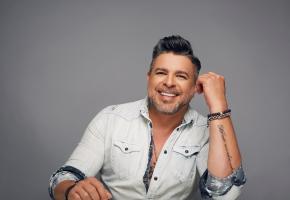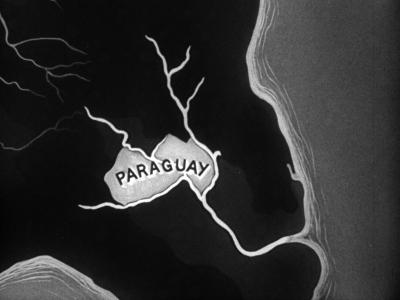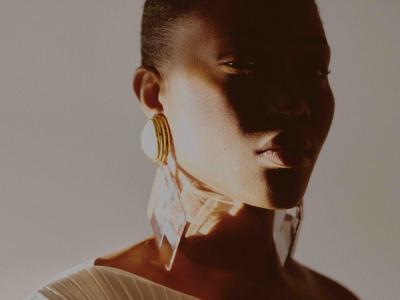You could say Mariana, now known as Los Yegros, is a child of the cumbia generation. In the late 90s, cumbia exploded in Argentina, brought by the influx of Bolivian immigration. Embraced by the masses and initially scorned by the middle classes (as music of the cabecitos negros), even the latter capitulated to the catchy rythmn and it ended up igniting many young Argentines' interest in its own indigeous folklore, in a post-dictatorhip era of rampant American-fulled consumerism.
So, Mariana’s early life is perhaps as fascinating as her later career when she became ‘La Yegros’. Born in Morón, in the west of Greater Buenos Aires, as a kid she listened to cumbia and chamamé all day. Chamamé is a traditional rhythm from the Argentine provinces of the Litoral region, on the border with Uruguay and Brazil. Cumbia is original from Colombia, but it has trespassed all borders to become the most popular rhythm in most parts of Latin America. Both were on all the time on her parents radio.
La Yegros is often associated with the sound of cumbia, probably because of the great success of ‘Viene de mí’, the only cumbia song in her first album, Viene de mí (2013). However, Mariana plays all kinds of rhythms from chamamé to milonga, and from carnavalitos to urban sounds.
Did you visit the Litoral as a kid?
“Yes, yes… because my family is from Misiones province and I also have family in Brazil, so I visited my grandmother, my cousins, and I still have family there, near the Iguazú falls and I visit sometimes”.
Have you got any memories of Misiones?
“Yes. What I love and is super characteristic from there, it’s the soil, which is red colour. The vegetation is also very visible and present, very noticeable as you arrive there, and it is very green and hot. It is a very especial place. Also, people drink mate all day. Misiones is where the yerba mate (mate herb) comes from and you can almost breathe mate and also chamamé”.
After finishing school Mariana went on to study classical music in the Conservatorio de Música de Morón. “I went there because I didn’t have money to pay for private lessons. The Conservatorio was excellent. It was my way into the study of music theory and practice (through opera singing)”.
While studying there she went to a casting for a show she had not heard of, and she got the job! They were no other than De la Guarda, the mythical theatre company originated in Buenos Aires that toured the world in the 2000s with original and physical spectacles to widespread acclaim.
She joined them for the spectacle Doma.
“It was only for five shows, and for my career it was a super important starting point. It changed everything. Basically, my debut as a singer was before 15,000 people. Later we did five more shows but my experience with them finished with Doma. As I was still studying opera song, with De la Guarda I found myself playing within a whole new spectrum of rhythms that ultimately I was so much more interested in!” There she also met King Coya (Kerpel) with who she has worked on her two albums Viene de mí and Magnetismo (2016).
By that time, she had been “able to afford "private lessons, so I started learning traditional styles from India, and from Africa which were more down to the roots of popular music”. Perhaps one of the most appealing aspects of La Yegros sound is that it feels natural, as if she was as much ‘at home’ within tradition as within the hybrid, postmodern sounds typical of the past few decades.
“The rhythms we play, like cumbia, carnavalito or chamamé are obviously related to our tradition, and many would associate them with the past or what is old. What we and other musicians are doing by mixing them with electronic music is a way of finding new colours, of bringing new sounds that keep them alive and even expand because this way they are attracting younger generations to them”.
Would you say the pace of chamamé represents or reflects in any ways life in the Litoral?
“It might be. Chamamé is a calm rhythm, and at the same time is also upbeat. It may be related to the presence of the rivers, the sounds of the water running them, the Iguazú waterfall. There is a rhythm that is visible in the region and is also audible in chamamé”.
What music do you like or listen to at home?
“I like Petrona Martínez (Colombia), Calle 13 (Puerto Rico), and musicians I identify with because of the power they transmit on stage and through their discourses. I like Rita Indiana (Dominican Republic), Bomba Stereo (Colombia). From Argentina, people I’ve always followed are Axel Krygier, King Coya, Bomba Stereo. What I love of them is that they connect with our folclore and they find new sounds. I also love musicians that play or played folclore in more traditional ways such as Chango Spasiuk, Raúl Barboza o Mercedes Sosa”.
- Let’s talk about your new album. How would you describe Magnetismo?
“I feel it's a continuation of Viene de mí. We keep on the same track, with new compositions and the same idea of Latin American rhythms mixed with electronic music. Magnetismo was also gestated during the Viene de mí tour, so we are living it as an 'expansion' of what we were doing during the past two years”.
In fact, La Yegros, as a band is a collective project with three main foundations: Mariana (brings to it a robust stage presence and a striking singing voice), producer Gaby Kerpel (musician and producer in major projects such as De la Guarda, Fuerza Bruta, and Terraplén), and compositor Daniel Martín (who wrote the songs that did best so far, such as ‘Viene de mí’, ‘Iluminada’ or ‘El Bendito’). The band also performs a guitar, percussion, accordion and electronic sounds. “Because this year our tours are very long we had to organize ourselves with more musicians, like in two sets so that they can all have a rest and spend time back at home with their families in Argentina”.
‘Chicha roja’, the album’s first cut (another Daniel Martín’s song), might travel as far as ‘Viene de mí’. This catchy tune about the Latin American drink brewed from maize, performs the multi-awarded Latin American producer and musician Gustavo Santaolalla (Bajofondo, Motorcycle Diaries), on the ronroco, an instrument of the family of the charango. The beautiful animated official video reflects the attention La Yegros gives to the visuals.
Other guests are Sabina Sciubba (Brazilian Girls), who sings in French, in ‘Arde’ together with the Colombian Puerto Candelaria. These songs, together with ‘Magnetismo’ – which opens the album – and ‘Dejate llevar’ perhaps represent what could be considered La Yegros’ typical sound by now, in that they are sweet and catchy, with verses that stay in your head. But there are a couple of slow tunes too, such as ‘Lejos’ and ‘Hoy’. They give you a break before you’re back into cumbias or carnavalitos. In the meanwhile ‘Atormentada’ will not only wrap around you and stay in your head, paraphrasing its lyrics, but you may find yourself replicating the rhythm and moving throughout the day.

















